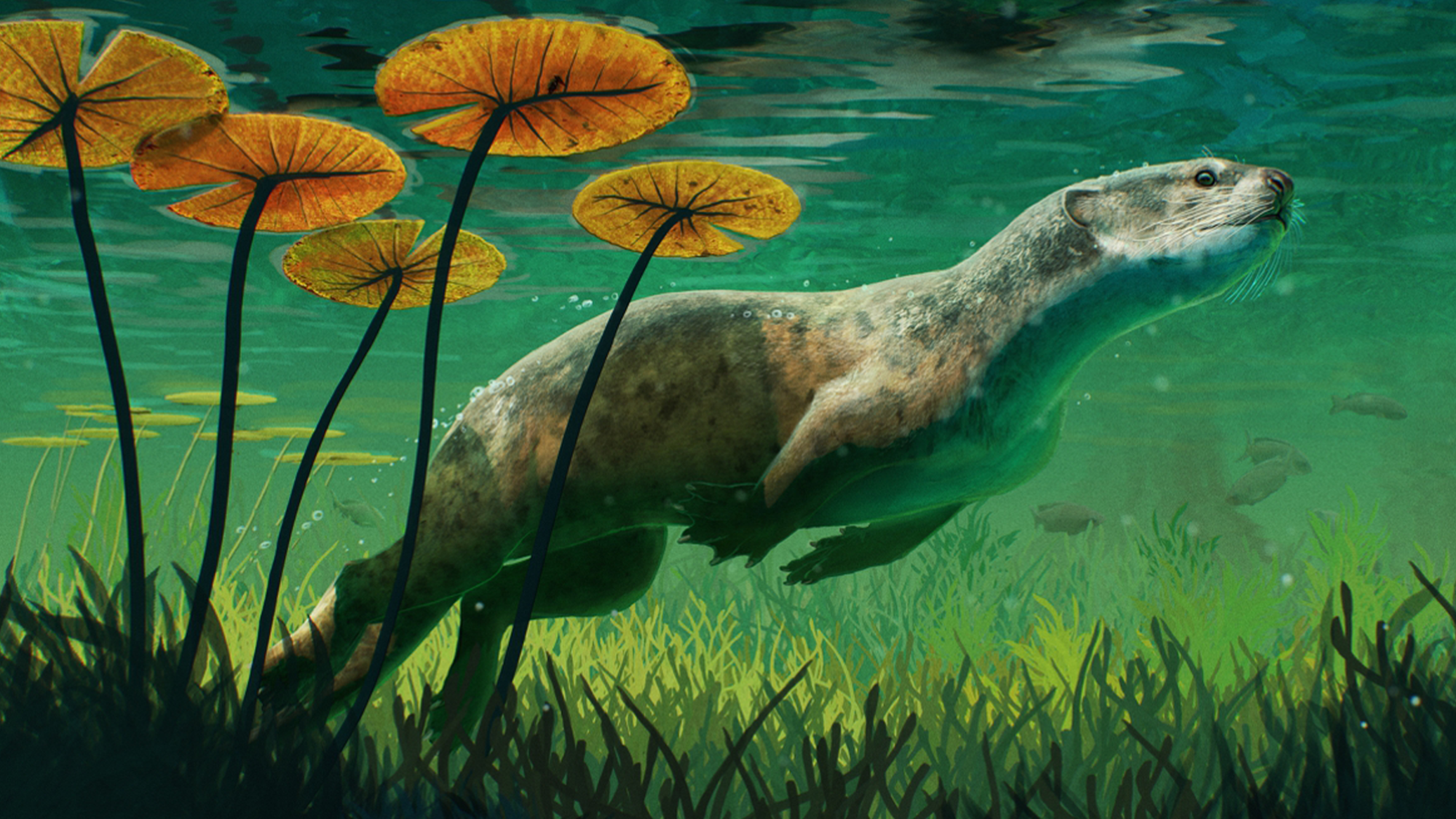

Over 23 million years ago, an ancient relative of modern seals called Potamotherium valletoni was possibly one of the first pinnipeds to use their whiskers to forage for food and explore their watery world. The findings were published August 17 in the journal Communications Biology and provide more insight into how ancient seals transition from a life lived on land into one mostly underwater.
[Related: Baby seals are born with a great sense of rhythm.]
The relatives of present day pinnipeds primarily lived on land and in freshwater environments, unlike our recognizable harbor seals which spend most of their time under the waves in saltwater. These early seals had legs for walking instead of flippers, a long tail, and were much longer, and looked a bit like present-day otters.
“Pinnipeds (seals, sea lions and walruses) diversified tremendously since their ancestors entered the seas,” study co-author Alexandra van der Geer, a vertebrate paleontologist at the Naturalis Biodiversity Center in the Netherlands tells PopSci. “All living pinnipeds are very distantly related to Potamotherium, so one could say that in a way all living pinnipeds are equally closely related to Potamotherium. That is why Potamotherium is called a stem (or basal) pinniped.”
Some early species used their forelimbs to explore their surroundings, and prior to this study, scientists were unsure when seals and their relatives began using their whiskers to forage. Whiskers are thick wiry hairs with tons of nerve endings at their base and they’re very sensitive to movement. They can be used to help detect vibrations in the water, making it easier to find fish.
Van der Geer and colleagues from institutions in Italy, Greece, and Sweden were inspired to look into this area of neurobiology by a visit to Chicago’s Field Museum. There, they studied the museum’s collection of special skull models called endocasts. “An endocast is the infilling of the inside of the skull, so it fills up the space of the (former) brain. The brain is soft tissue and does not fossilize, but decomposes and disappears after death,” explains van der Geer.
In the study, they used these endocasts to investigate the evolution of whisker-foraging behaviors. They compared the brain structures of Potamotherium with six extinct and 31 living carnivorous mammals, including bears, mustelids, and seal relatives. The team compared the size and structure of a brain region called the coronal gyrus. Some earlier studies suggest that this region is involved in processing signals from seal whiskers.
[Related: Seals snooze during 20-minute ‘sleeping dives’ to avoid predators.]
They found that Potamotherium had a larger coronal gyrus than both ancient and living land-based mammals that use their forelimbs to forage, such as the Asian small-clawed otter. However, it had a similar sized coronal gyrus to other ancient seal relatives and semiaquatic mammals that use whiskers to explore, including the Eurasian otter. This shows that Potamotherium may have used a combination of forelimbs and whiskers to forage.
The team was surprised by the convergent evolution they saw in their study. “Not just seals but also some otters, civets and other carnivore mammals that are unrelated to seals, yet use their whiskers for foraging their prey underwater in the same way as seals, developed the same part of the brain,” van der Geer says.

Additionally, they were surprised to see that coronal gyrus looks the same species with the same behavior, independent of their family ties. The team believes that whisker-based foraging may have already been present in seal relatives before they transitioned to their fully aquatic lifestyles of today. Using whiskers may have helped the Miocene-era creatures adapt to finding food underwater.
The study also shows the value of studying brain endocasts to look into the past. “By looking at the details of the brain endocast one can infer behavior and function in fossil species,” says van der Geer.
